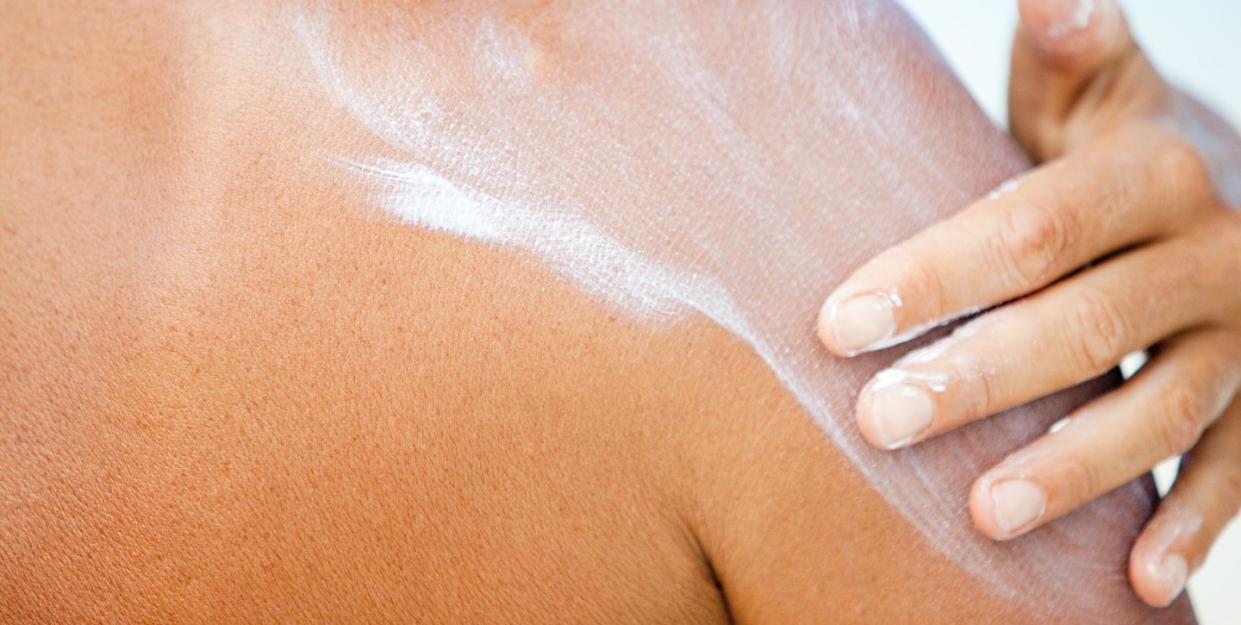Does Sunscreen Block Vitamin D From the Sun?

Sunscreen is vital to helping protect the skin from sunburn and lower your chances of skin cancer, but many people worry that blocking the rays can also block vitamin D, which our bodies produce when we are exposed to the sun.
Now, new research published in the British Journal of Dermatology found that using sunscreen might not block the benefits of vitamin D after all.
Before you head out on a hot and sunny ride, you probably slather on some sunscreen to protect yourself from the sun’s harmful rays and guard against sunburn and skin cancer.
But the sun is also important for making vitamin D. When our skin is exposed to the sun’s rays-specifically UVB rays-it triggers the production of vitamin D, which promotes calcium absorption, boosts immune function, and helps thwart inflammation. (UVB rays, which are responsible for the vitamin D production, are also the cause of the harmful effects like sunburn or skin cancer risk. UVA rays, on the other hand, are less intense and are linked to aging and wrinkling of the skin.)
So when you are blocking out the harmful rays, are you also missing out on the benefits of the sun?
Researchers set out to answer that question. In a recent study published in the British Journal of Dermatology, they found that you can get protective benefits of sunscreen without compromising vitamin D levels after all.
In the study, researchers measured the vitamin D levels of people before and after spending a week in cloudless weather on a beach in Spain. Two different types of SPF-15 sunscreen were used-one with low UVA protection factor (PF) and one with high UVA-PF. These types are more common in European sunscreens than in the U.S., where you will normally just see “SPF” on the bottle, but the high UVA-PF blocks out more UVA rays than the lower one.
Participants were either instructed on proper sunscreen use (using the amount needed to fill a shot glass) or told use it at their discretion. At the end of the week, they spent about 39 hours outside.
The researchers found that both types of sunscreen were effective at protecting against sunburn-only the people who were not told how to use it properly ended up getting fried. They also discovered that neither kind of sunscreen blocked vitamin D production. Both led to increased vitamin D synthesis, though the high UVA-PF type did transmit about 20 percent more UVB, allowing for more vitamin D.
[Want to fly up hills? Climb! gives you the workouts and mental strategies to conquer your nearest peak.]
“The important message is that doses for vitamin D production are much lower than for sunburn,” Antony Young, Ph.D., professor of experimental photobiology at King’s College London told Bicycling. That means you can still get enough sun to trigger vitamin D even when you put on enough sunscreen to guard against burns.
So the excuse that you need to skip sunscreen to keep up your vitamin D levels is just not valid.
Proper sunscreen application is important, as the study found, so when you go out for a ride, ensure you’re following the American Academy of Dermatology (AAD) recommendations: 1 ounce of SPF 30 or higher-enough to fill a shot glass-to fully cover your body.
“Energetic cycling will results in sweating, so more re-application might be necessary-or better to use a sports product designed for that,” Young said. “It’s best to keep up vitamin D by regular low-dose sunlight or higher doses with good sunscreen.”
The AAD also recommends applying sunscreen 15 minutes before going outdoors and reapplying every two hours and after sweating based on the recommendations on the bottle.
Bottom line: By using sunscreen, you’re protecting yourself from harmful rays, but still getting the vitamin D you need. So slather up.
('You Might Also Like',)

